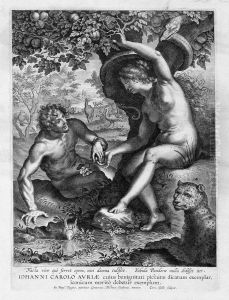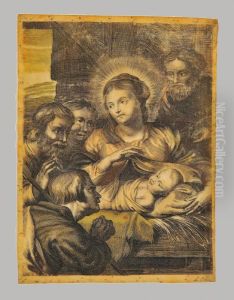Cornelis Ii Galle Paintings
Cornelis II Galle was a Flemish engraver and printmaker who was born in Antwerp in 1615. He was part of the prominent Galle family of artists and the second son of Cornelis Galle the Elder and the brother of Theodoor Galle. His grandfather, Philip Galle, was a notable engraver and publisher who had set up a prolific workshop in Antwerp and laid the foundation for the family's artistic legacy.
Cornelis II trained under his father and was greatly influenced by the artistic environment in which he was raised. The Galle family workshop was a hub of creativity and production, where members of the family and their apprentices produced engravings based on the works of leading painters of the time. Cornelis II’s work was characterized by a meticulous attention to detail and a robust technique, which was typical of the Flemish engraving tradition of the 17th century.
Throughout his career, Cornelis II produced a vast number of engravings, many of which were based on the designs of prominent artists such as Peter Paul Rubens, Anthony van Dyck, and Jacob Jordaens. His engravings covered a wide range of subjects, including religious imagery, portraits, allegorical scenes, and historical events. He played a significant role in disseminating the works of Flemish Baroque painters to a broader European audience, as prints were more widely accessible and affordable than original paintings.
In addition to creating engravings, Cornelis II also took over the management of the family publishing business after the death of his father. He continued to publish prints and to promote the works of various artists through the medium of engraving. His contributions helped to maintain the Galle workshop's reputation as one of the most important printmaking and publishing centers in Northern Europe.
Cornelis II Galle passed away in 1678, but the impact of his work and that of the Galle family continued to be felt in the art world. The engravings produced by the Galle workshop remain valuable records of Baroque art and are studied for their technical skill as well as their artistic merit. They also serve as important historical documents that provide insight into the visual culture of the period.

